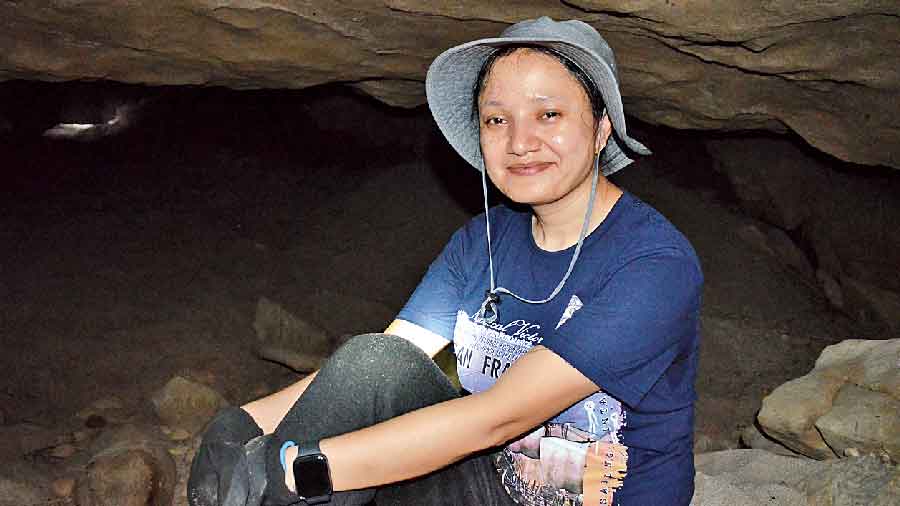Scientists have reconstructed a 1,000-year history of the Indian summer monsoon, showing severe protracted droughts coincided with social disruptions — the 15th century Durga Devi famine, the Mughals’ abandonment of Fatehpur Sikri, and deindustrialisation in the 18th and 19th centuries.
The researchers studying stalagmites in Mawmluh cave near Cherrapunji, Meghalaya, have found chemical signatures of intense and prolonged droughts embedded within multidecadal periods of a weakened monsoon at least thrice over the past millennium.
The findings, published in the US research journal, Proceedings of the National Academy of Sciences, on Monday challenge assumptions based on 150 years of instruments-based weather data that the monsoon is largely a stable system that does not deviate much from its average performance.
“Instead, we found that the monsoon has changed abruptly and dramatically several times in the past,” Gayatri Kathayat, a paleoclimate researcher and an associate professor at Xi’an Jiaotong University in China, who led the study, told The Telegraph.
While historical documents over the centuries have provided vivid accounts of catastrophic drought-triggered famines and mass deaths in India, such accounts have been fragmentary.
Instrument records since 1871 have documented 27 droughts, but only one instance of three consecutive years of drought —1985-1987 — and five instances of subcontinent-wide severe droughts with rainfall 20 per cent below average, the worst in 1877 with rainfall 30 per cent below average.
Kathayat and her colleagues have found evidence for three multidecadal drought periods — 1560s to 1640s, 1780s to 1810s, and 1850s to 1870s — with eight to 14 droughts per 30 years, consistent with historical accounts.
The researchers from China, Austria, the UK and the US measured the ratios of two forms of oxygen in stalagmites —limestone formations emerging from the base of caves — in Mawmluh near Cherrapunji, which is among the wettest places on earth.
The oxygen ratios serve as proxy indicators of the subcontinental monsoon — indicating dry periods or wet periods — allowing scientists to reconstruct in unprecedented year-by-year detail the monsoon’s performance.
“Our monsoon history is in striking synchrony with historical accounts of droughts and provides climatic context to major societal disruptions,” Kathayat said. “We’re not suggesting droughts alone triggered those changes but they could have played roles.”
Their analysis has revealed extreme drought episodes centred around 1400 AD, during the so-called Durga Devi famine between 1395 and 1407, and the Deccan famine between 1630 and 1632 in western India. It has also shown an exceptionally dry period coinciding with historical accounts of the Chalisa and the Doji Bara or Skull famines between 1792 and 1798 with a combined estimated 11 million deaths across the subcontinent.
The stalagmite record has also shown that the Mughal’s abandonment of Fatehpur Sikri coincided with the dry period 1580-1610. Historians have debated for decades whether Emperor Akbar had abandoned the city for military or political reasons or under the pressure of drought.
“This is the first high-precision monsoon record from India that allows a direct comparison with available historical documentary sources and climate data,” said Hai Cheng, an expert in dating cave formations and the study’s senior author.
The study suggests that protracted droughts lasting three years or longer tend to occur in clusters within decades-long intervals of weak rainfall, separated by centuries-long periods of stable monsoon, said Ashish Sinha, professor of earth sciences at California State University, Dominguez Hills.
The scientists have cautioned that the absence of protracted droughts over the past 150 years may have lulled policy-makers into a misleading sense of comfort. Kathayat said any assumptions that protracted droughts are not an intrinsic feature of the monsoon are “myopic”.

Gayatri in the Mawmluh cave near Cherrapunji, Meghalaya The Telegraph Picture
“Policy-makers and the public are not familiar with catastrophic droughts,” said Kathayat. “Protracted droughts may overwhelm adaptive capabilities of even modern societies. We need to take a long-term view of the monsoon’s capacity to shift into a prolonged weak phase.”
The findings suggest that the dry period between 1780s and 1810s could have contributed to India’s deindustrialisation during the early 19th century. At the peak of the Mughal empire, between 1650 and 1700, India produced and exported 25 per cent of the world’s textiles.
But India had lost most of its export market by the mid-19th century.
While historians have attributed this deindustrialisation to reduced agricultural productivity and fragmentation of the Mughal empire, the scientists said, the 30-year dry period could have caused a slump in crop productivity and, alongside political changes, sowed the seeds of India’s 18th-19th century deindustrialisation.










